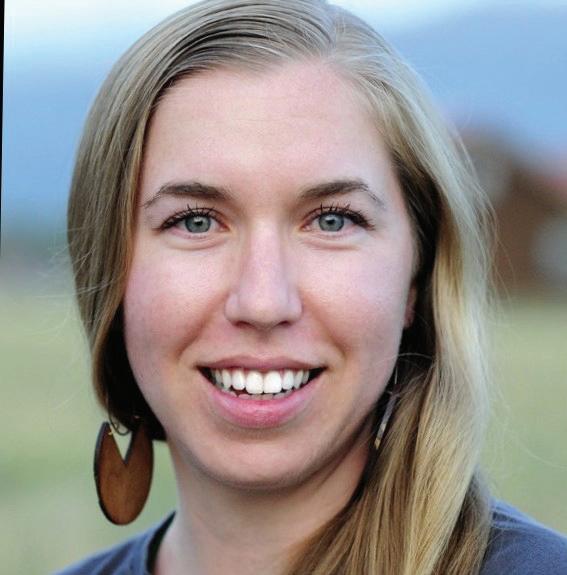
5 minute read
THE AMBASSADORS CHAIR
Last month, Products of Change teamed up with Women in Food Industry Management (WFIM) to celebrate Earth Day with the launch of a Virtual Sustainability Summit, exploring some of the most critical topics impacting sustainability within the global food and FMCG supply chains right now.
Curated by Products of Change’s Ambassador for Canada and North America, Brenda Seto, the Summit featured special guest appearances and moderator roles from some of POC’s most familiar faces.
“A lot of thought leadership around developing packaging with circular economic principles in mind has also been around the support structures that get the products to the end user”
Mike Swain , Ambassador for Packaging and Materials, Product of Change
Packaging And Product Must Live As One
A holistic view of packaging and product as one needs to be taken if we are going to surmount the issue of sustainability in the FMCG sector properly, and that includes the weighty influence of length of supply chains and shelf life.
This was the consensus when experts in packaging innovation convened for a panel session hosted by Products of Change’s Ambassador for Packaging and Materials, Mike Swain last month to explore sustainable development within the international food sector. Prompted by a question on the relationship between innovations in packaging and length of supply chains at the inaugural Women in Food Industry Management x Products of Change Sustainability Summit in April, experts from Unilever, Club Coffee, and Pulpworks agreed that shorter product shelf life and fewer miles travelled will be a key driver for more sustainable packaging and models of reuse and refill.
“A lot of thought leadership around developing packaging with circular economic principles in mind has also been around the support structures that get the products to the end user,” said Mike Swain as he led a panel featuring Paul Tasner, founder of Pulpworks, Solange Ackrill, vp of marketing at Club Coffee, and Catherine McVitty, sustainability lead at Unilever Canada.
“People are realising that to reduce carbon – coming from things like trucking, storing, the waste generated at every transition along the supply chain – is to reduce the ring fence around the miles that are covered in getting product to its destination.


“So, smaller hubs may not be as efficient as larger hubs in terms of roll-out but can be way more efficient in bringing down road miles or loss and waste caused along the supply chain. And shorter shelf life will impact directly on the kind of packaging model your products use.”
The panel session had been talking around numerous sticking points within the subject of product packaging, including the use of compostable materials – innovation being led in the coffee sector by Solange and the team at Club Coffee – or alternative materials such as the fibres created from waste left over from sugar cane processing, as is being led by Pulpworks.
However, the dominant topic of the hour was the need to no longer look at packaging as an afterthought to the product but as an integral –albeit sacrificial – part of it.
Unilever Canada’s Catherine echoed sentiments when she said: “As companies make net zero commitments and track their carbon footprint, it’s going to require shortening those supply chains to reduce carbon footprint connected to product and packaging.
“But also, climate change is going to drive that too. We have too many severe weather events that disrupt those lengthier supply chains. So, whether it’s driven by shorter shelf life of experts during WFIM x POC’s Circularity in Fashion session. or end-of-life in mind.’
Utilising her knowledge and insight as the director of sustainability for the US Polo Association, Jessica steered conversation through an expanse of topics - from the ghost economy to the destructive impact of Lionfish – to explore each of the fundamental principles of the circular economy.


Jessica was joined by a collection of discipline leaders in circularity, including Casey Plasker, founder of Circularly, a strategy-builder for circular business models; Amelia Eleiter, co-founder of DeBrand, a company dealing with ‘reverse logistics’ and products that come back to companies through the supply chain; and Aarav Chavda, co-founder of Inversa Leathers, a team dedicated to regenerating delicate natural ecosystems through the exploration of materials derived from invasive species.
“If we can create products designed with intent we can reduce cost,” said Amelia. “Then, if we can use the investment community to help support product or through companies measuring their carbon footprint, the supply chains are going to get shorter by necessity.”
Pulpworks’ Paul Tasner summarised how this would affect designs in packaging when he concluded that “shorter shelf life on products will only act to benefit a company like Pulpworks whose materials aren’t designed – like plastic, glass, or tin - for long supply chains.”
He said: “Short shelf life, we can compete with other forms of less sustainable packaging. So, I am leading the cheer for shorter shelf life, it will open the door to greater sales for us.”
CLOSE (LOOP) ENCOUNTERS
Investment and engagement from the finance sector and the creation of a network of loops-within-loops were among the key conclusions drawn when Products of Change’s Ambassador for Apparel in North America, Jessica Lenhart, played host to a panel of circular economy
Each panellist an example of a ‘loop-within-a-loop’ themselves, the discussion gave Virtual Sustainability Summit attendees great insight into the need for an ‘ecosystem of circular practices’ to be at work to achieve true circularity, from product design and materials used to the end-of-life processes and how to ‘close the loop’ and retain value by rethinking our perceptions of waste.
DeBrand’s Amelia highlighted the size of the ‘ghost economy’ –an “entire economy living outside of what we see as customers” of secondary goods that come back to companies through customer returns or faulty batches.
“It’s how DeBrand started, to help companies deal with products that come back through the supply chain where there was previously zero accountability and zero regulation, just an economy of goods that weren’t quite perfect but very useful, that were just getting discarded,” she said.
Dealing with ‘reverse logistics’ is just one example of a loopwithin-a-loop that – while improving – still struggles with high costs associated with recycling often driven upwards ‘when products aren’t designed with recycling emerging companies to prove that model, we will see a growing confidence in circularity.”
Inversa Leathers is one such emerging company. Specialising in the removal of invasive species from areas they’ve been introduced to by human error to restore delicate ecosystems, the team has pioneered an alternative leather produced from the animal hide of species such as the lionfish, dragonfin, and python.
“The invasive Lionfish is one of the single greatest threats to coral reefs in the Gulf of Mexico, where they kill 80% of baby native fish within five weeks of an invasion,” said Aarav. “When I think of ecosystems, I think of the razor-thin tolerance they have and the actions we need to take to revive them.”
Inversa works only with individual divers and hunters, meaning it has visibility down to the name of the individual sourcing each hide it uses. This can be pinpointed down to the exact time and location of retrieval.
“We’re in a unique position here, because we’re probably the only producer in the world whose end goal is to see their natural resources run out,” said Aarav.









